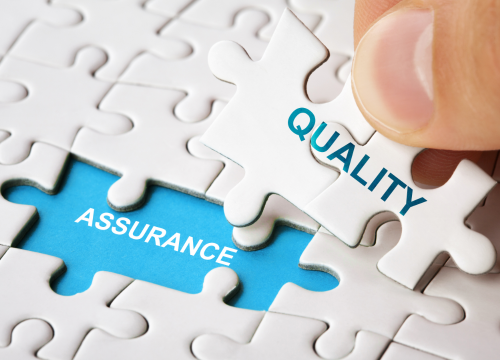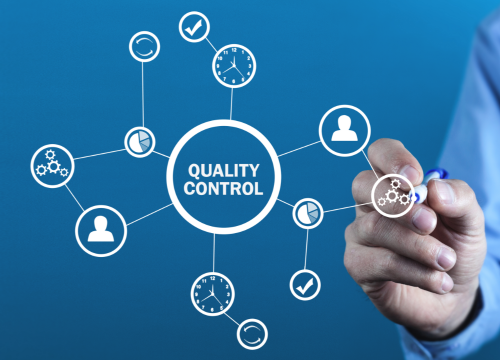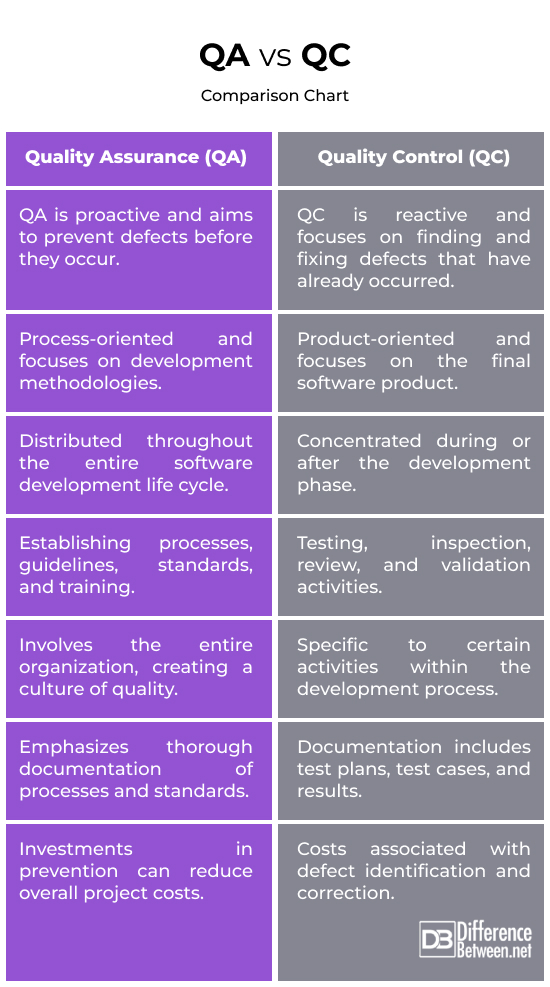Difference Between Quality Assurance and Quality Control
Quality assurance (QA) and quality control (QC) are essential components of quality management that play crucial roles in the manufacturing and service industries to ensure the production of high-quality goods and services. Both terms are often used interchangeably, but they represent distinct processes occurring at separate times.
In this article, we’ll delve deeper into the two processes and then write a detailed quality assurance vs. quality control breakdown to help you better understand them.

What is Quality Assurance?
Quality assurance (QA) is a proactive approach focused on preventing defects or issues in the production process. It involves establishing processes and standards to ensure that the product or service meets or exceeds the desired quality. In manufacturing, this might involve creating standardized operating procedures, conducting employee training, and implementing quality management systems.
In the service industry, QA may involve defining and monitoring service standards, training employees, and implementing feedback mechanisms. In software development, QA is a systematic process and set of activities aimed at ensuring that the software being developed meets specified quality standards and fulfills customer expectations.

What is Quality Control?
Quality control (QC) is a reactive approach that involves inspecting and testing the final output to identify and correct any defects or deviations from the established standards. In manufacturing, this could mean inspecting the produced items at various stages of the production line to ensure they meet specifications.
In the service industry, QC might involve monitoring service delivery through audits, customer feedback, and regular evaluations. In software development, QC is the process of identifying and fixing defects or issues in the software product. It involves activities such as testing, inspection, and review to ensure that the software meets the specified quality standards and requirements.
Difference between QA and QC
Let’s take a look at some fundamental differences between QA and QC in the context of software development.
Objective/Focus
QA (Quality Assurance) is proactive and aims to prevent defects by establishing processes and standards throughout the development life cycle. The focus is on creating a foundation that minimizes the likelihood of defects occurring during development.
QC (Quality Control) is reactive and focuses on detecting and correcting defects through activities like testing, inspection, and review. This involves executing tests, inspections, and reviews to identify issues within the software product. The goal is to find and fix defects that have already occurred rather than prevent them from happening.
Technique
QA is process-oriented and emphasizes the importance of well-defined and consistently followed processes. It involves creating and maintaining a framework that guides the entire development life cycle.
QC is product-oriented and focuses on the end product itself. Activities such as testing, inspection, and validation are performed directly on the software to assess its quality, identify defects, and ensure that it meets the specified requirements.
Execution Timeline
QA activities are distributed throughout the entire software development life cycle. They start early in the planning and design phases and continue through implementation, testing, and deployment. QA is a continuous and ongoing process.
QC activities are concentrated during or after the development phase. Testing occurs at various stages, including unit testing, integration testing, system testing, and acceptance testing, ensuring the product’s quality before it is released to users.
Involvement
QA involves the entire organization, promoting a culture of quality across all departments. It encompasses training employees, defining company-wide processes, and fostering a commitment to quality at every level.
QC is specific to certain activities within the development process, such as testing and inspection. It is more task-oriented and focuses on specific activities to ensure the quality of the product.
QA vs. QC: Comparison Chart

Summary
In a nutshell, both QA and QC are complementary and work together to ensure that products and services meet the required standards. Understanding these distinctions helps organizations implement a comprehensive quality management strategy that integrates both QA and QC practices for effective software development.
FAQs
Which comes first, QA or QC?
QA comes first. QA is implemented throughout the entire software development life cycle, starting from the planning and design phases.
What is the difference between quality assurance and process control?
QA involves creating a framework and culture of quality within an organization, emphasizing the prevention of defects through processes, standards, and training. Process control, on the other hand, involves monitoring and adjusting specific processes to ensure they meet established standards and requirements. It is a subset of QA, focusing on the control of individual processes.
What is the difference between quality management and assurance?
Quality management encompasses the overall coordination and control of quality activities within an organization, including both QA and QC. Quality Assurance specifically refers to the proactive activities undertaken to prevent defects and ensure adherence to established processes and standards.
What are the three differences between quality assurance and quality control?
- QA is proactive, while QC is reactive.
- QA is process-oriented, while QC is product-oriented.
- QA focuses on preventing defects, while QC focuses on identifying and correcting defects.
Can you have QA without QC?
Yes, it is possible to have QA without QC. QA focuses on establishing processes to prevent defects, and in an ideal scenario, if these processes are effective, there may be minimal need for reactive quality control activities.
What are the four types of quality assurance?
- Process Assurance
- Product Assurance
- Organizational Assurance
- Project Assurance
What is an example of quality control?
Conducting software testing to identify and fix defects in a software application before it is released to users.
What are the five responsibilities of quality control?
Below are some important responsibilities of quality control:
- Creating and executing test plans.
- Identifying and documenting defects.
- Verifying adherence to specifications.
- Conducting inspections and reviews.
- Ensuring the final product meets quality standards and requirements.
- Difference Between Caucus and Primary - June 18, 2024
- Difference Between PPO and POS - May 30, 2024
- Difference Between RFID and NFC - May 28, 2024
Search DifferenceBetween.net :
2 Comments
Trackbacks
Leave a Response
References :
[0]Patnaik, G.S. Quality Assurance in Industries: A Comprehensive Guide to Quality Assurance in Industries. Notion Press, 2021.
[1]Gillis, Alexander S. “Quality Assurance (QA).” TechTarget, www.techtarget.com/searchsoftwarequality/definition/quality-assurance. Accessed 8 Jan. 2024.
[2]March, Jason. “Quality Assurance vs. Quality Control Explained: 5 key differences.” Qualio, 24 Feb. 2022, www.qualio.com/blog/quality-assurance-vs-quality-control.
[3]“Quality Control vs. Quality Assurance: Key Differences.” Indeed, 29 Dec. 2023, www.indeed.com/career-advice/career-development/quality-control-vs-quality-assurance.
[4]Image credit: https://www.canva.com/photos/MADny7skM7s-quality-control-industry-technology-internet-business/
[5]Image credit: https://www.canva.com/photos/MADmePYCJBc-hand-holding-piece-of-puzzle-with-word-quality-assurance-/

This article on QA and QC has enlightened me more